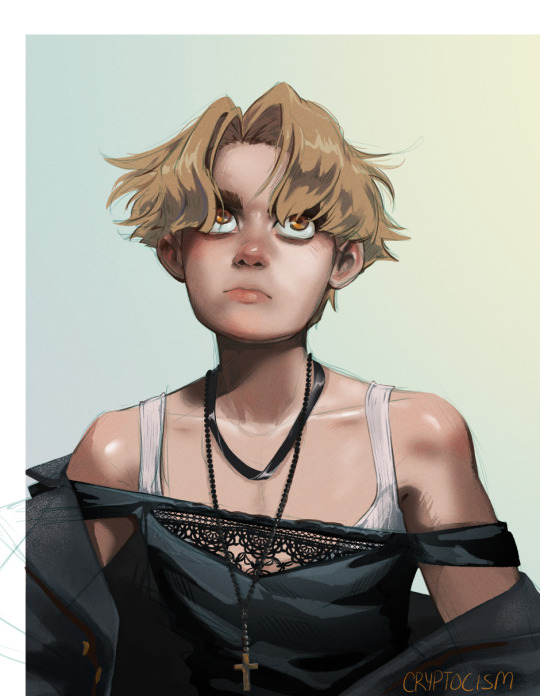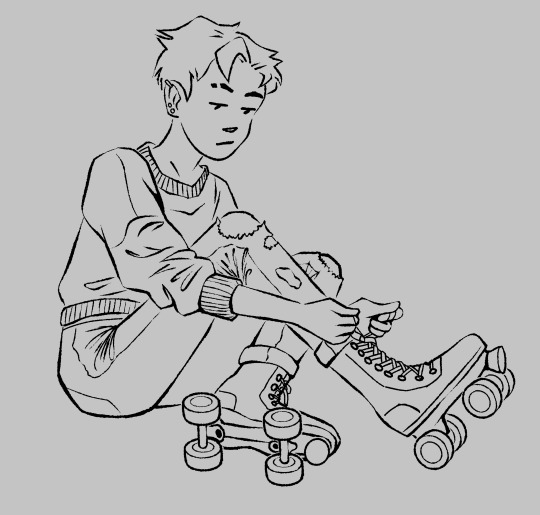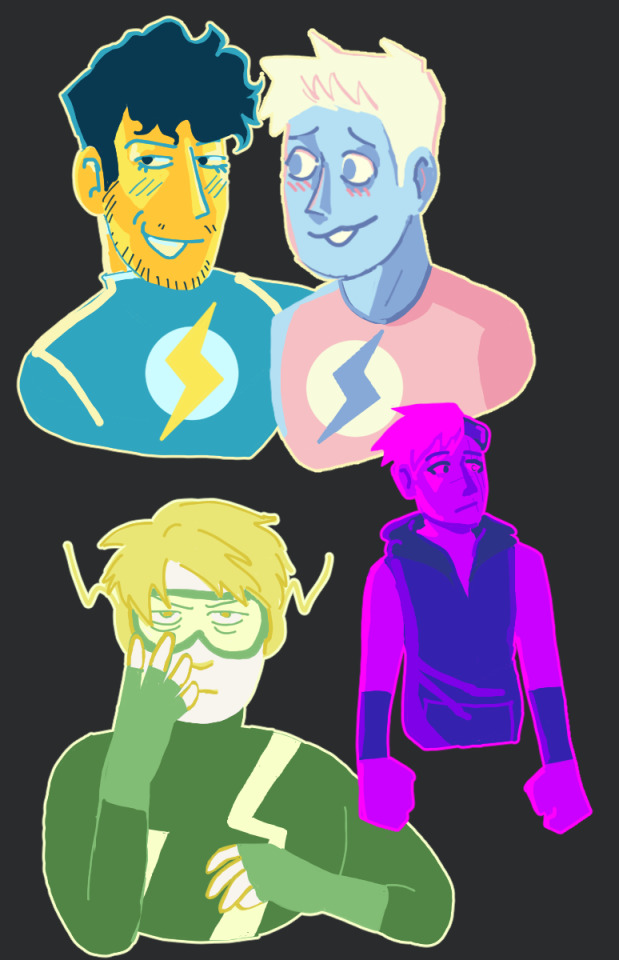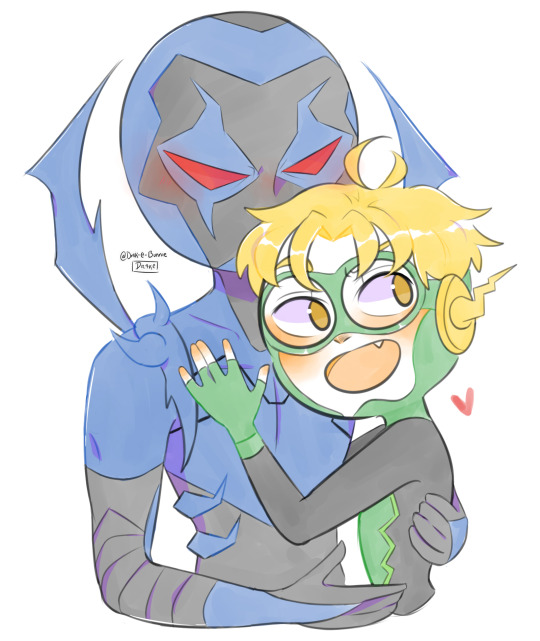#dc intertia
Text
tell me they don't deserve a solo series together

like dc c'mon man look at the potential
#US CLONES NEED TO STICK TOGETHER 🗣️🗣️🗣️🗣️#dc match#bizarro boy#superboy clone#thad thawn#thaddeus thawn#dc intertia#dc#dc comics#shaza talk#matchthad
49 notes
·
View notes
Text

current affliction: any moody-looking photo on pinterest is instantly used as reference for drawing The Guy
#my art#dc#thad thawne#thaddeus thawne#intertia#goth thad is like glam rock kon ok#its about the vibes#not necessarily canon evidence#ngl i watched the craft one (1) time and it changed my brain chemistry#which means thads outfit inspiration starts and stops with looking up pictures of nancy and sighing wistfully#new art process alert for the fiftieth fking time
548 notes
·
View notes
Text

Lineart and flats under cut


#Thad Thawne#Thaddeus Thawne#Inertia#intertia DC#fanart#i havent drawn in forever#havent posted in this blog for even longer#my art#mine#can you tell i had no idea what to do for the background?
153 notes
·
View notes
Text
Would anyone like to hear my utter incomprehensible ramblings about comparing Shigaraki Tomura 's character and it's development - more what's currently happening with it and his it's the same disappointing mess that happened to (obscure? I think at least kinda obscure) comic book character Thaddeus Thawne/Inertia???
I have....I have big thoughts ™
#ramblings of a lunatic#bnha#mha#shigaraki tomura#dc comics#thaddeus thawne#intertia#please#i am thinking#and man they end uo suffering the same writing pitfalls#makes me sad
12 notes
·
View notes
Text

some palettes!
36 notes
·
View notes
Note
Can you draw "Kajinertia", please? 0


Khaji da X inertia??? Of course! 💙💙
#Khaji da#Intertia#khajinertia#my art#thad thawne#thad#oh i like this#ask me :D#Dc comics#Eobard thawne#Reverse flash
304 notes
·
View notes
Note
It makes me sad that Dick doesn't have a Super friend when Jason, Tim, and Damian do, and it makes me sad that Jason doesn't have a speedy friend even though Dick, Tim and Dami do
Dick has Donna how dare you-
#someone wants to know#batfam#dick grayson#jason todd#tim drake#damian wayne#donna troy#wally west#bizzaro#conner kent#kon el#jon kent#jon samuel kent#screw it#intertia is Jason’s speedster friend#don’t believe DC’s lies
73 notes
·
View notes
Note
Have you ever written for Thadd (Intertia) from DC?
I have not. I have zero idea whom that is.
1 note
·
View note
Link

It's no secret that The Flash has some of DC's best villains with the Rogues Gallery, and part of their strength is their intelligence. When most people think of Flash villains they jump to the Reverse Flash as the Scarlet Speedster's main rival, but any discussion of his villains isn't complete without mentioning Central City's most well-organized group of criminals, the Rogues Gallery. Originally formed in The Flash #130, this team of baddies was originally a loose alliance of costumed criminals who decided that strength in numbers was the key to defeating Flash. But over time the Rogues would develop into a coherent unit of professional thieves-and eventually, the smartest team of supervillains in DC comics history.
The Rogues Gallery doesn't have an "official" lineup but there are a few veterans who appear in most versions of the team. Some of the most frequent members of the Rogues are Heatwave, Mirror Master, Pied Piper, and the group's leader, Captain Cold. As the head, Cold isn't just the most powerful Rogue-his strict leadership and no-nonsense attitude towards crime is what drives the Rogues to succeed. What makes Cold and the Rogues so much smarter than other villains is their pragmatic attitude towards crime. Rather than try and take over the world like some villains, the Rogues stick to smaller crimes like bank robberies since it involves significantly less risk that a more violent anti-hero will kill them.
Related: Green Lantern Just Traded His Ring For His Coolest Weapon Ever
In fact, the Rogues have made it a point to only antagonize the Flash because they recognize that he will, at worst, drop them off at the police station and call it a day. Unlike other villains who genuinely hate their heroic counterparts The Rogues treat their rivalry with the Flash like a business relationship where each side is just doing their job. When the Rogues aren't committing crimes the Rouges are willing to team up with the good guys if it's in their interest to do so. Their relationship with the Flash is so casual that in The Flash Vol 2 #19 The Rogues actually invite Wally West to Captain Cold's retirement party!

The second secret behind the Rogues' success as villains is that the team considers themselves to be professional thieves above everything else. That means that they will avoid seeking revenge or killing bystanders unless it's unavoidable. This attitude is what lets the Rogues focus on completing robberies instead of getting distracted by personal grievances. But the Rogues don't avoid murder because they're pacifists. Just like everything Leonard Snart does it's actually a calculated risk to keep the team afloat. When the Rogues are tricked by the Speedster villain Intertia into killing Barry Allen's grandson the team goes into hiding because they understand that murdering one superhero can lead to an army of Justice League members hunting them down. Once again the Rogues prioritize staying out of trouble so they can commit more robberies in the future.
From an outsider's perspective, the Rouges' tendency to focus on low-level crimes like Bank robbery makes them appear weak and non-threatening compared to other villains but this is far from the truth. In Final Crisis: Rogues Revenge by Geoff Johns, Scott Kolins, and Dave McCraig the team faces off against a group of new villains who stole the Rogues' technology and their identities. Unlike with the Flash, this time the Rogues actually are out for revenge, so naturally they destroy the imposter Rogues and kill them all without much effort. Time and again people will underestimate the Rogues Gallery because they aren't as flashy or ambitious as other villains, but people like The Flash understand just how dangerous the Rogues Gallery can be when they put their impressive minds to it.
Next: The DCEU Suicide Squad Was Weak, And The Comics Just Proved It
The Reason Why The Flash's Rogues' Gallery Are The Smartest Villains Ever from https://ift.tt/3clUW44
0 notes
Note
Why is Marvel so obsessed with Heroes versus Heroes? I read somewhere they accidentally made all of their villains except a select few so pathetic while building their heroes up the heroes eventually outclassed all their rogues' galleries, and from my own understanding of and reading the comics it makes some sense. Is that take sensible? Any other or deeper reasons for why we never see Marvel villains beyond the occasional arch-nemesis anymore?
While I hardly think we never see Marvel villains anymore, a few reasons for the undeniable shift you’re describing immediately come to mind.
1. Hero vs. hero is built into the fabric of the universe; hell, the first fight in Fantastic Four #1 is Ben trying to literally murder Reed. They’re a bunch of tormented super-nerds and super-jocks and super-ninjas used to any weirdos in costumes they see attacking them, so lashing out isn’t a surprising reaction.
2. Most of Marvel’s biggest villains have to some extent or another changed their ways, whether pretty organically with Loki, or not so much with Doom. They’re crowd-pleasers with tortured souls who leave the door open to redemption, part of their appeal in the first place, but now that it’s actually happened with so many they’ve left a gap.
3. The ‘heroes with problems’ formula has escalated to a point that most personal or otherwise particularly significant stories have to be on the most intense, life-shattering circumstances possible, of the sort your garden-variety superdopes like Scorpion or Diablo can’t provide.
4. For bigger threats, the Marvel Universe is interconnected to an extent that DC isn’t, so if Fin Fang Foom attacks New York every super team is going to go after him, and then it’s not really a fight anymore. And you can only go cosmic so often.
5. Every time the heroes come to blows, it’s necessarily planting the emotional seeds of them fighting again, especially if other creators think they could do that same basic conflict better.
Under those circumstances, it’s not surprising that they’ve defaulted to the heroic community falling apart - that’s where intertia’s been leading them for awhile now.
12 notes
·
View notes